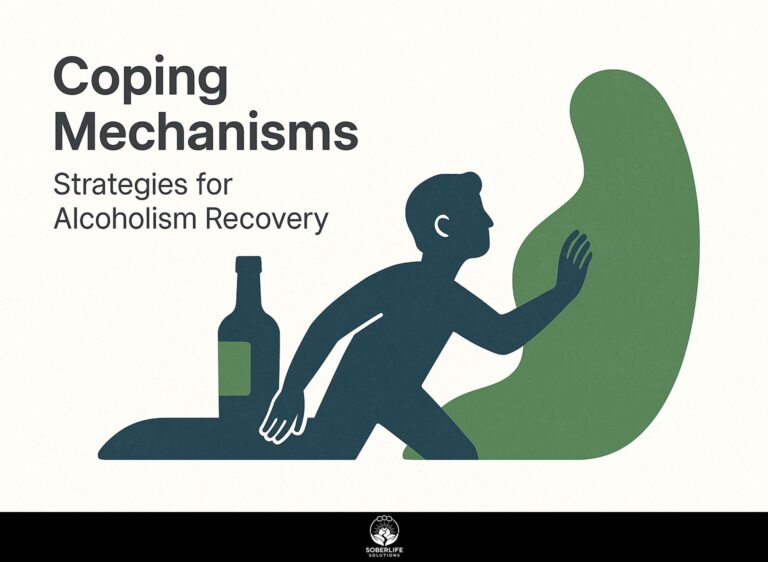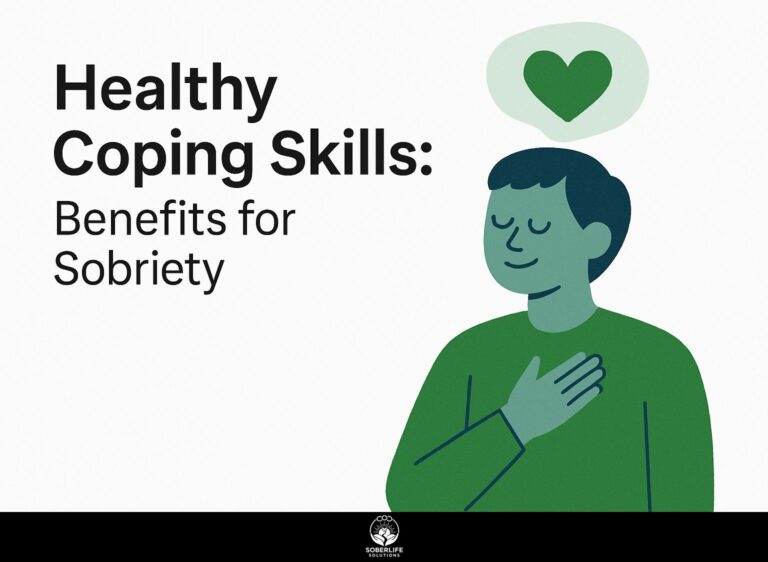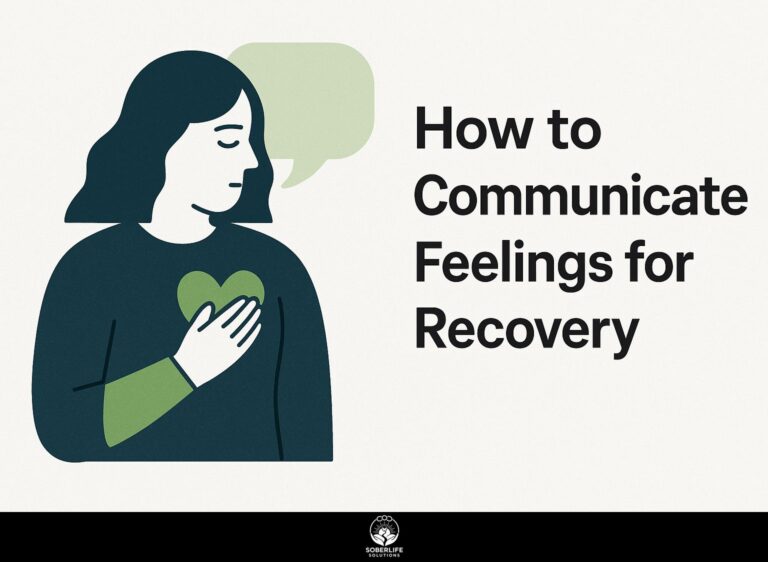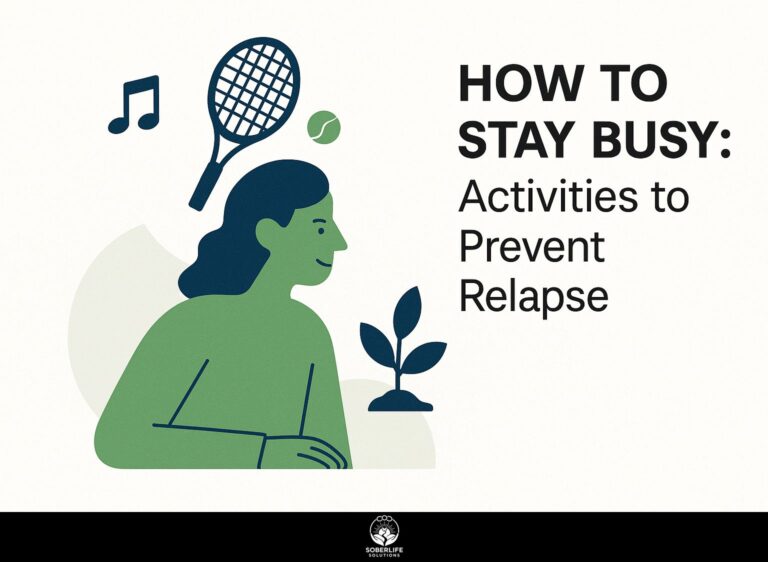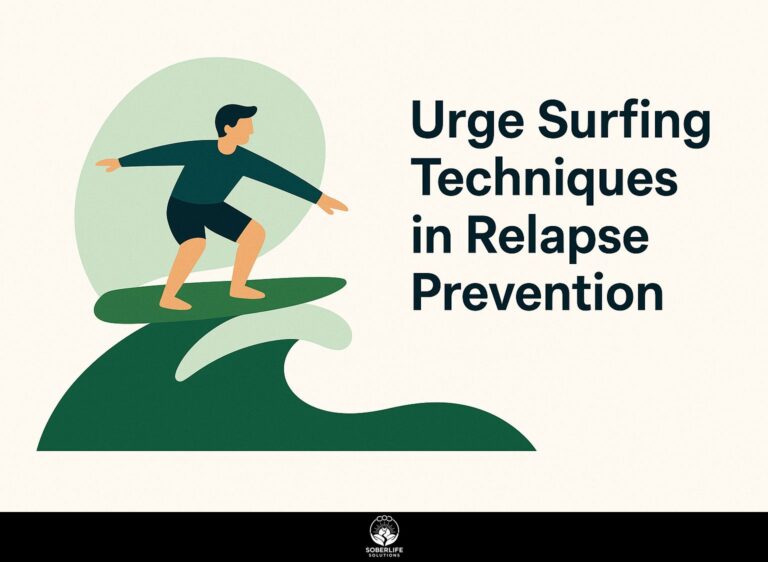Grounding Techniques: Use in Recovery
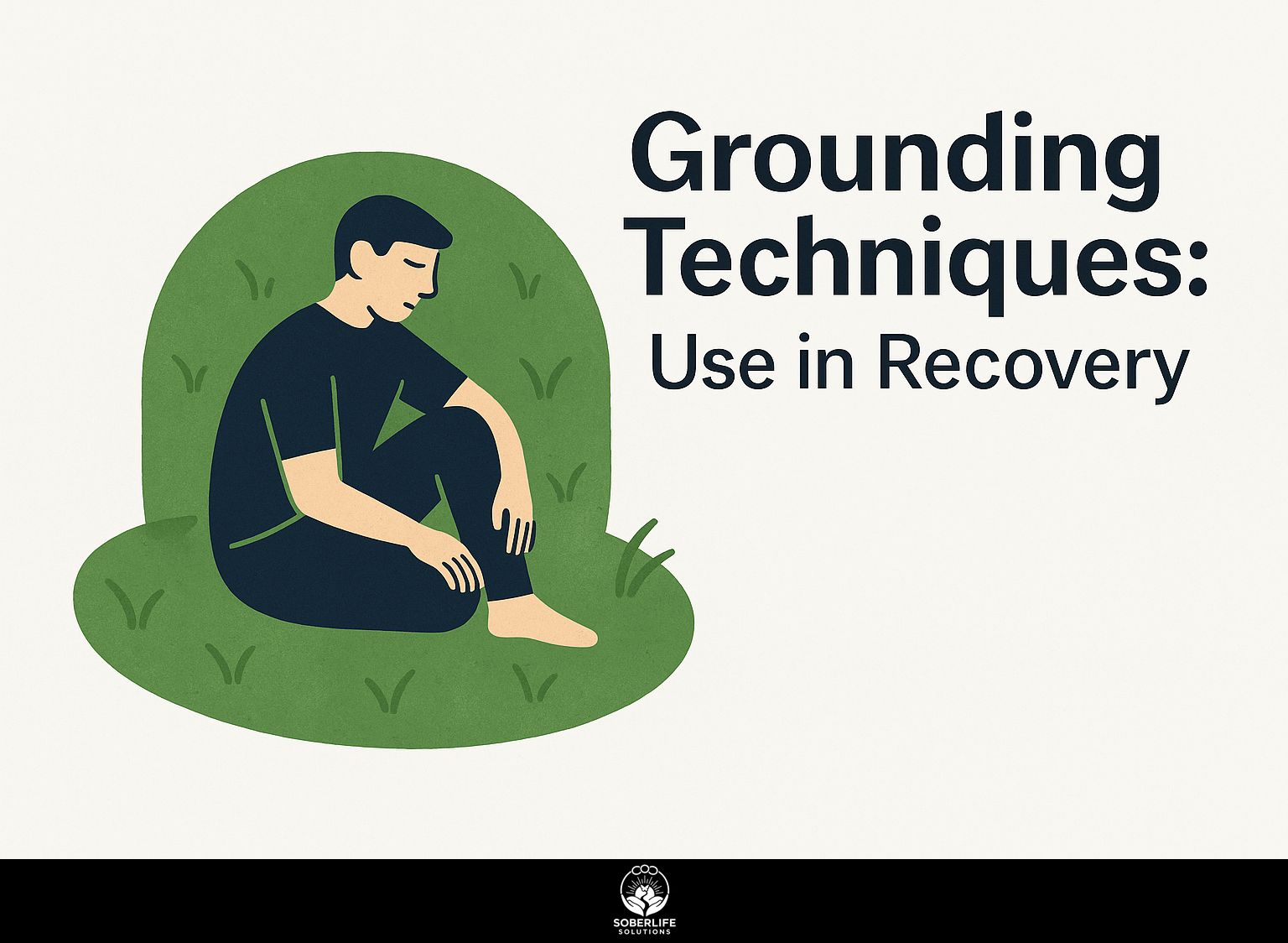
Feeling overwhelmed by trauma recovery? Grounding techniques can help you manage emotional distress, particularly if you are experiencing PTSD or anxiety. These clear methods help mental health by enhancing thinking skills and aiding in managing emotions. In this article, we’ll look at different grounding methods, their benefits in recovery, and how to use them in your daily routine for long-term emotional stability. Learn how to use grounding methods to regain your calm.
Key Takeaways:
Understanding Recovery
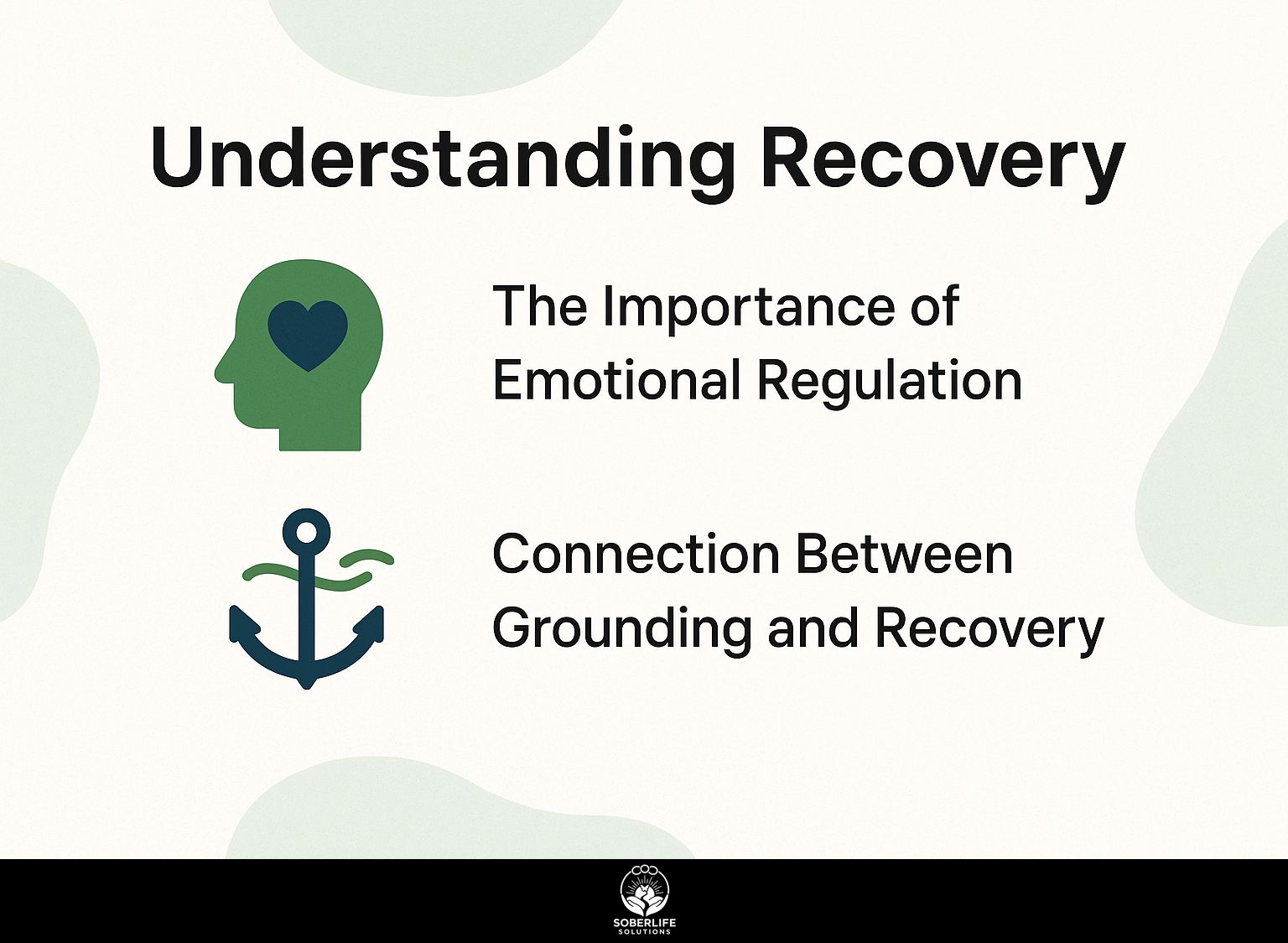
Recovering from trauma involves various methods, with managing emotions being key to achieving mental stability. Research published in Nature indicates that self-compassion plays a protective role in this process, underscoring the importance of self-care in emotional recovery. Understanding how to cope with emotional triggers is essential to maintaining stability and resilience, as discussed in our exploration of strategies for managing emotional triggers.
The Importance of Emotional Regulation
Managing emotions is important for dealing with the challenges of trauma recovery. It helps people handle difficult feelings and stay calm.
Cognitive Behavioral Therapy (CBT) techniques are effective for emotional regulation. For instance, journaling can help process feelings; writing about events and emotions allows individuals to gain clarity and identify triggers. As noted by Verywell Mind, CBT’s structured approach assists in understanding and altering negative thought patterns.
Pair this with mindfulness practices, such as deep breathing or meditation, to ground oneself during high-stress moments. Related insight: Recovery Techniques: Mindfulness, Meditation, and Stress can enhance these grounding practices, making them more effective.
Creating a support system-whether through friends or support groups-can provide safety and encouragement, enhancing resilience.
Many individuals report significant improvements in emotional control after integrating these strategies into their routine.
Connection Between Grounding and Recovery
Grounding techniques help reduce anxiety right away and play an important role in improving PTSD symptoms and emotional distress over time.
By practicing grounding techniques, individuals can create a sense of safety and stability in their lives.
For example, a veteran named Mike found that engaging in deep breathing exercises during panic attacks allowed him to reconnect with reality, reducing his anxiety progressively. Similarly, Sarah, a survivor of trauma, integrated the 5-4-3-2-1 technique, where she identifies five things she can see, four she can touch, three she can hear, two she can smell, and one she can taste.
These strategies provided fast relief and became essential parts of their daily mental health routines.
Types of Grounding Techniques
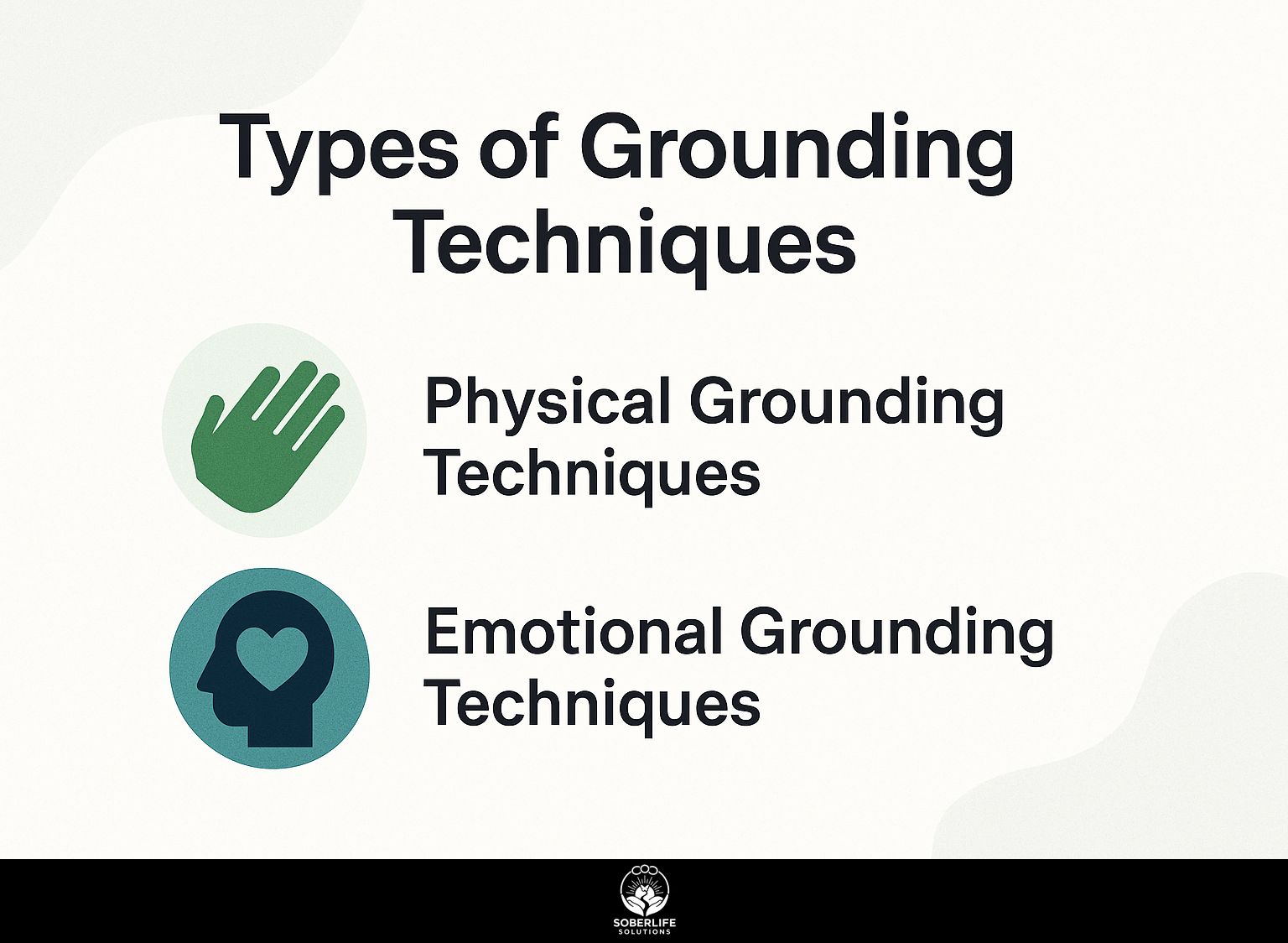
Grounding techniques can be divided into two main types: physical and emotional.
Each type helps improve mental health in its own way. Healthline offers a comprehensive guide to 30 grounding techniques that can quiet distressing thoughts and enhance mental well-being. To further explore emotional regulation as part of mental health, this hidden gem on emotional regulation techniques provides valuable insights, particularly in the context of sobriety.
Physical Grounding Techniques
Physical grounding techniques use the senses and body to help people focus on the present moment, which makes them effective for quick stress relief.
Here are five effective grounding techniques:
- Deep Breathing: Inhale deeply through your nose for a count of four, hold for four, and exhale through your mouth for six. Repeat five times.
- 5-4-3-2-1 Method: Identify 5 things you can see, 4 you can touch, 3 you can hear, 2 you can smell, and 1 you can taste.
- Grounding Chair: Sit in a sturdy chair with your feet flat on the ground, focus on the connection of your feet to the floor, and breathe deeply.
- Squeeze Technique: Clench and release your fists or tense and relax your muscles one group at a time to redirect your focus.
- Nature Walk: Spend time outside. Focus on the colors, sounds, and textures around you to increase awareness and feel more relaxed.
Emotional Grounding Techniques
Emotional grounding techniques focus on building self-awareness and emotional resilience, providing a safe space to process feelings.
Many useful grounding methods can improve emotional control.
-
Guided imagery allows you to visualize a tranquil scene, promoting relaxation; simply close your eyes and imagine a peaceful place.
-
Mindfulness meditation, which can be practiced through apps like Headspace, encourages you to focus on your breath, reducing anxiety.
-
Saying affirmations like “I am safe and stable” can help create a feeling of security.
-
Incorporating these techniques for just a few minutes each day can significantly help in managing stress and overwhelming emotions.
How to Implement Grounding Techniques
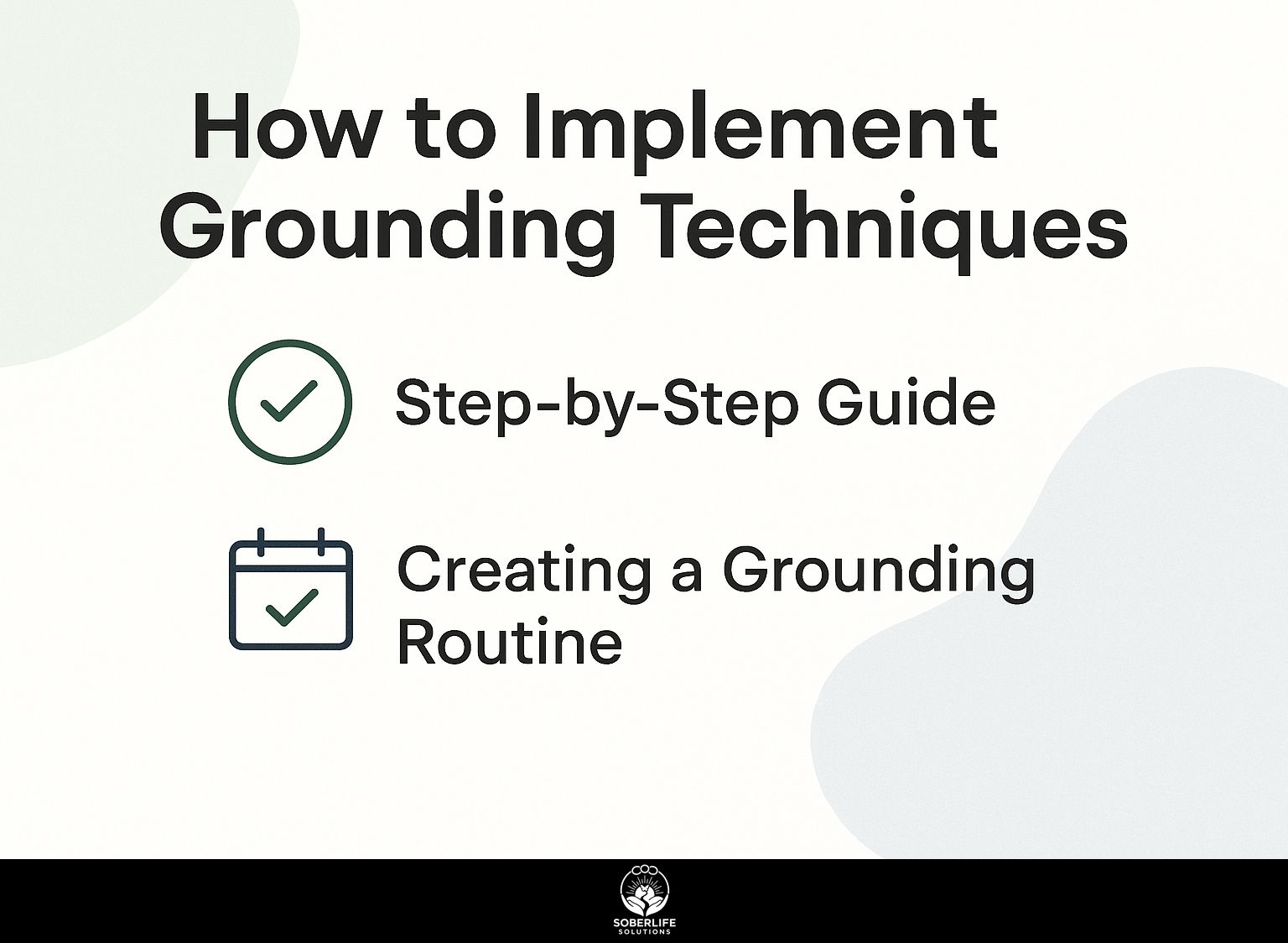
Using grounding techniques needs a clear plan so people can use these methods in their daily routines successfully. For an extensive analysis of this approach, our deep dive into CBT techniques for veterans explores how structured methods can enhance effectiveness in daily practices.
Step-by-Step Guide
- Identify triggers
- Choose techniques
- Schedule time
- Practice regularly
- Reflect on progress
Start by keeping a journal to track situations that heighten anxiety or stress. Once you identify these triggers, select grounding techniques such as deep breathing, sensory focus (like holding a cold object), or mindfulness exercises.
Block out 10-15 minutes daily in your calendar for these practices, perhaps in the morning or during a lunch break. Consistency is key, so develop a habit by picking the same time each day.
Use the journal to reflect weekly on what works and adjust your approach to maximize effectiveness.
Creating a Grounding Routine
A routine designed to suit personal needs and likes makes techniques work better.
To create a grounding routine, start by identifying your triggers, such as stress or anxiety moments. Combine techniques like deep breathing, meditation, and physical movement.
For instance, you might begin with five minutes of focused breathing, followed by a short ten-minute walk in nature. To make it personal, write in a journal to track which methods suit you well and adjust your routine as needed.
A sample template could involve:
- Morning: 5 min breathing, 10 min walk;
- Afternoon: 5 min stretches, 5 min mindfulness.
Change things as you find what keeps you steady the best.
Benefits of Grounding in Recovery
Methods for staying present offer many advantages during recovery, such as improved emotional regulation, reduced anxiety, and clearer thinking.
Research indicates that techniques such as deep breathing and the 5-4-3-2-1 exercise can significantly reduce anxiety levels. A study in the Journal of Clinical Psychology found that people using grounding techniques had a 30% drop in anxiety symptoms.
Many therapists recommend using mindfulness apps like Headspace or Calm for guided grounding exercises, particularly during moments of distress. Testimonials from users often show that these practices have helped them find better ways to manage challenges, playing a part in their overall recovery process.
Challenges and Considerations
While grounding techniques are powerful, users may encounter challenges that can impede their effectiveness if not acknowledged.
Common challenges include difficulty concentrating, emotional resistance, overstimulation, and time constraints.
To tackle concentration issues, try the ‘5-4-3-2-1’ method: identify five things you can see, four you can touch, three you can hear, two you can smell, and one you can taste.
You can deal with emotional hesitation by defining a specific purpose for your grounding practice, making it feel more important.
For overstimulation, create a calming environment with soft lighting and minimal distractions.
Set aside just a few minutes daily; even short practices can yield benefits.
Frequently Asked Questions
What are grounding techniques and how are they used in recovery?
Grounding techniques are coping strategies used to help individuals manage overwhelming emotions and thoughts. In recovery, grounding techniques can be used as a tool to stay present and focused in the present moment.
Why are grounding techniques important in recovery?
Grounding techniques are important in recovery because they can help individuals manage triggers, cravings, and other difficult emotions that may arise during the recovery process. They provide a way to stay in the present moment and reduce the risk of relapse.
What are some examples of grounding techniques?
Some examples of grounding techniques include deep breathing, using the five senses, mindfulness exercises, and physical activities such as walking or yoga. The key is to find what works best for you.
How do grounding techniques help with managing triggers?
When an individual experiences a trigger, their mind may begin to race with thoughts and emotions. Grounding techniques can help bring the individual back to the present moment and reduce the intensity of the trigger’s effect.
Can grounding techniques be used in addition to other coping strategies?
Yes, grounding techniques can be used in combination with other coping strategies such as therapy, support groups, and medication. They can be a useful tool to improve how well these other methods work.
How can I add grounding techniques to my daily routine?
You can include grounding techniques in your daily routine by choosing a specific time each day to practice them. You can also use them as needed throughout the day, such as during moments of stress or when you feel triggered.

